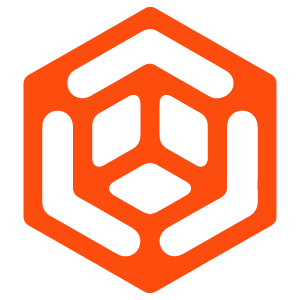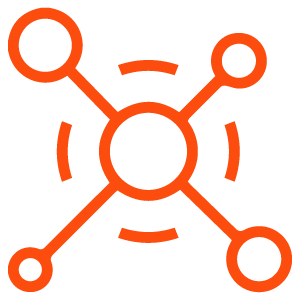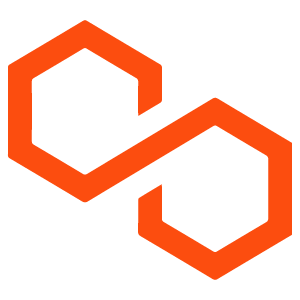#Crafting #Unique #Experiences #Art #Science #Custom #Website #Development
In today’s digital age, a website serves as the face of a business, an online storefront, and, in many cases, the primary means of communication and engagement with customers. With over 1.8 billion websites currently operating on the internet, it is crucial for businesses to distinguish themselves through effective design and development. Custom website development has emerged as a vital strategy for companies seeking to create unique experiences that resonate with their target audience. This article explores the processes, advantages, and considerations involved in custom website development, as well as the art and science behind creating an impactful online presence.
Understanding Custom Website Development
What is Custom Website Development?
Custom website development refers to creating a website tailored specifically to the unique requirements of a business. Unlike template-based solutions, which often limit creativity and functionality, custom development allows a company to craft a digital experience that aligns perfectly with its branding, goals, and user needs. The process encompasses various stages, including planning, design, coding, testing, and launching the site.
Why Choose Custom Development?
-
Unique Branding: Custom development enables businesses to create designs and functionalities that distinguish them from competitors. A unique website can make a lasting impression and foster brand loyalty.
-
Tailored User Experience: Custom websites can be designed to suit the specific needs of the target audience, enhancing usability and navigation. This can result in better user engagement and reduced bounce rates.
-
Scalability: Custom websites are designed with future growth in mind. As businesses expand and their needs evolve, a custom site can easily adapt to changes without the limitations imposed by templates.
-
SEO Optimization: By focusing on custom development, businesses can implement advanced SEO strategies that are tailored to their niche, increasing visibility in search engine results.
- Enhanced Functionality: Custom websites can incorporate unique features and integrations relevant to the business, whether it be an e-commerce platform, booking system, or specific APIs needed for functionality.
The Process of Custom Website Development
Creating a custom website involves multiple interconnected stages, each requiring careful consideration and execution.
1. Planning
Effective planning is the foundation of any successful web project. This phase includes:
- Defining Objectives: Clearly outline what the website aims to achieve, be it lead generation, sales, information dissemination, or community building.
- Understanding the Audience: Conduct thorough research on the target demographic to identify their needs, preferences, and pain points. This is crucial for tailoring the design and content.
- Competitive Analysis: Analyze competitors’ websites to identify strengths and weaknesses. This helps in determining what approaches will set your site apart.
2. Design
The design phase brings your planning to life. Key considerations include:
- Wireframing: Develop a wireframe to visualize the layout and user journey. This acts as a blueprint for the website’s structure.
- Visual Design: Choose color schemes, typography, and graphical elements that align with your brand identity. Ensure that the design is aesthetically pleasing yet functional.
- Responsive Design: Ensure the website is mobile-friendly. With more users accessing sites via mobile devices, a responsive design is essential.
3. Development
In this phase, the actual website is built. This involves selecting the right technology stack and developing features. Key activities include:
- Front-End Development: This involves coding the visual aspects of the website using languages like HTML, CSS, and JavaScript.
- Back-End Development: Develop the server-side components, integrating databases and server logic using languages such as PHP, Python, or Ruby.
- Content Management System (CMS): If applicable, implement a CMS that allows the business to easily manage and update site content.
4. Testing
Before launching the site, thorough testing is vital to ensure everything functions as intended. This includes:
- Functional Testing: Ensure all features work as expected across different devices and browsers.
- Performance Testing: Assess load times and responsiveness under various conditions to ensure optimal performance.
- User Acceptance Testing (UAT): Gather feedback from real users to identify any usability issues before the official launch.
5. Launch
Once testing is complete and any necessary adjustments have been made, the website is ready to go live. This phase may include:
- Marketing Strategy: Prepare an online launch marketing campaign to generate buzz and drive traffic.
- Monitoring: Use analytics tools to monitor website performance, traffic sources, and user behavior post-launch.
6. Ongoing Maintenance
Post-launch, continued support and maintenance are crucial. This includes:
- Regular Updates: Keep the site’s software, security features, and content updated to ensure reliability and relevance.
- Performance Optimization: Regularly assess and optimize the website for speed and usability.
- User Feedback: Continuously gather user feedback to make iterative improvements.
The Art of Custom Website Development
While the technical aspects of website development are important, the artistry involved cannot be overlooked.
Aesthetic Design
The visual appeal of a website is often the first element that captures a user’s attention. Elements like color palette, typography, imagery, and layout contribute to the overall aesthetic, which must resonate with the brand’s identity.
Storytelling through Content
Content is a critical component of any website. Engaging storytelling can enhance the user experience, inform visitors, and guide them toward desired actions. Well-crafted content not only attracts users but also supports SEO efforts.
User-Centered Design
The most successful websites are those that prioritize the user experience. Understanding user motivations and behaviors allows developers to create intuitive navigation, engaging visual cues, and responsive layouts that keep users engaged.
The Science of Custom Website Development
While customization has a strong artistic component, various scientific principles underpin effective website development.
Data-Driven Decisions
Using analytics and user data to make informed decisions is critical. Tracking user behavior helps in understanding what works and what doesn’t, allowing for continuous improvement.
SEO Best Practices
Understanding search engine algorithms and optimizing your website accordingly is fundamental in driving organic traffic. This involves keyword research, on-page SEO, and backlink strategies.
Performance Metrics
Monitoring key performance indicators (KPIs) such as load time, conversion rates, and user engagement can identify areas of improvement. A website must not only look good but also perform well to retain users.
Security Measures
Given the prevalence of cyber threats, implementing secure coding practices and using reliable hosting solutions are essential to protect sensitive user data.
Challenges in Custom Website Development
Time Constraints
Custom development often takes longer than pre-built solutions. Businesses must be willing to invest time in the planning, design, and testing phases.
Budget Considerations
Custom development typically requires a higher budget compared to template-based solutions. It’s essential to allocate resources wisely and understand the return on investment from a well-developed website.
Rapid Technological Changes
The digital landscape continuously evolves, with new technologies and trends emerging regularly. Staying up-to-date with these changes can be challenging but is necessary to remain competitive.
Skill Gaps
Finding and retaining skilled developers and designers can be difficult. Building a talented team is crucial for successful custom website development.
FAQs
1. How long does it take to build a custom website?
The timeline varies based on complexity but generally ranges from a few weeks to several months. Factors like planning, design, and development all influence the timeframe.
2. What technologies are commonly used in custom website development?
Popular technologies include HTML, CSS, JavaScript for front-end development, and languages like PHP, Python, or Ruby for back-end development. Various CMS options also exist, including WordPress, Joomla, and more.
3. Can I update the website myself after it’s launched?
Yes, most custom websites include a CMS that allows you to make updates. It’s essential to receive proper training or documentation during the launch phase to ensure ease of use.
4. Is SEO included in custom website development?
SEO strategies can be incorporated during the development process, including on-page SEO, mobile optimization, and site structure. It’s important to discuss your SEO needs at the planning stage.
5. How much does custom website development cost?
Costs can vary widely based on the project’s complexity, features, and the expertise of the development team. It’s essential to define your budget and discuss it honestly with your developers.
6. What happens if I need new features after the website is launched?
Custom websites are built with scalability in mind. New features can usually be added; however, costs and development time will depend on the complexity of those features.
7. How do I choose a custom website development agency?
Look for agencies with a strong portfolio, client testimonials, and relevant experience in your industry. Evaluate their understanding of your brand and their ability to meet your specific needs.
Conclusion
In an increasingly crowded digital landscape, custom website development stands out as a critical approach for businesses aiming to create unique, engaging online experiences. By combining the art of compelling design with the science of data-driven decisions, companies can craft websites that not only attract but also retain users, fostering lasting relationships. As technology continues to evolve, embracing custom development will be essential for businesses seeking to remain competitive and effective in their online endeavors. Investing time, budget, and effort in crafting a unique digital experience is not just beneficial—it’s essential.
It looks like you didn’t provide a specific article title. Could you let me know the topic or title you’re interested in?








